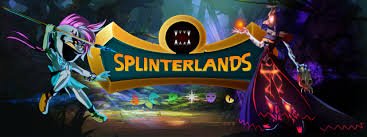Customizing any item involves a meticulous process of selecting the right materials to bring the envisioned final product to life. While the initial concept might seem straightforward and exciting, it's during the execution phase that the real challenges arise. Ensuring that each component aligns with the envisioned outcome demands careful consideration and planning. This phase often involves extensive research, sourcing, and sometimes trial and error to achieve the desired outcome.
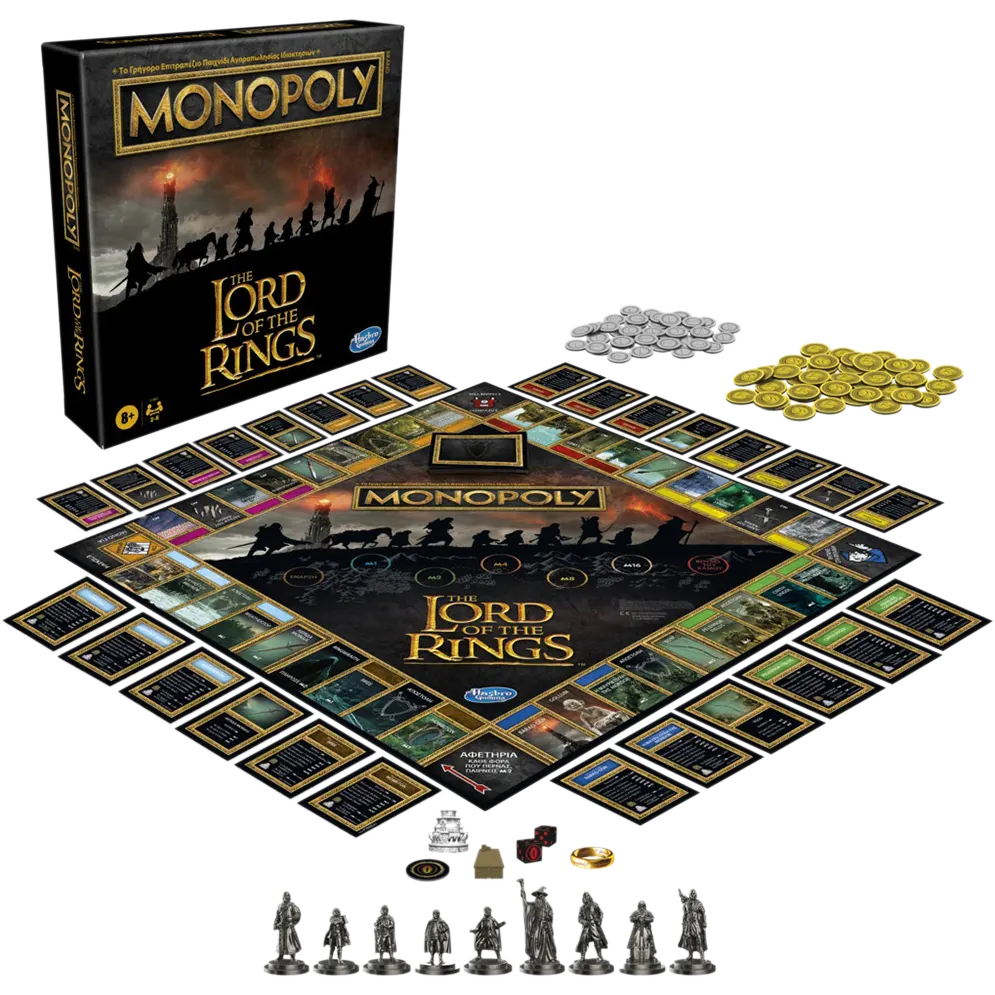
Moreover, the challenge extends beyond mere assembly; it's about obtaining the essential materials from scratch. This endeavor proves to be a difficult journey characterized by its complexity, costliness, and time intensiveness. Sourcing the right materials involves navigating through many options, assessing their quality, availability, and suitability for the project. Additionally, the investment required—both in terms of finances and time—is considerable, highlighting the dedication and commitment demanded by such endeavors.
This is what I'm facing in this initial stage of customizing the Monopoly Lord of the Rings...may never forget when it comes to customization, imagination is the limit...As you read on, you'll see these pieces and the initial materials I've managed to gather so far and essentially how much they've cost me.
Below you can see some of the new miniatures that will accompany the game. In addition to the 9 main figures of the Fellowship of the Ring, I decided to enrich the game's board with various other figures, primarily metallic, making the gameplay more interesting and detailed. Here, I present only 6 out of the approximately 50 that I purchased. The cost is quite high, but these are unique pieces with incredible detail, top-notch detail that adds even more value to the final image of the game. For these specific figures, i paid a total of 86 euros including the shipping cost
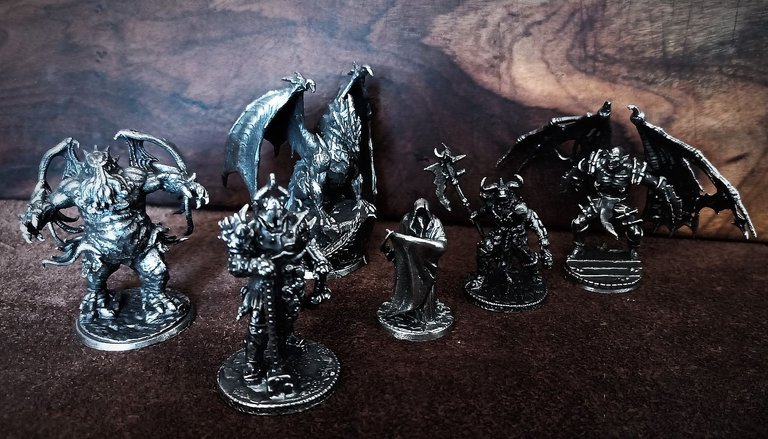
Leathers... Leather is a material that perfectly fits the theme of The Lord of the Rings. The main reason I decided to use it, however, is more for protection rather than decoration. I want to use it to cover the bases of the various miniatures so that with years of use, the board of the game will be as little affected as possible by scratches, wear, etc.
For these pieces of leather i paid around 20 euros including shipping cost...I bought them from Temu, and I believe their price was really very cheap, and I scored a real bargain

The pieces of wood you see in the photo below will be used to create a base on which the game board will essentially 'rest' once it has been properly treated. The main idea for creating this base came from the common experience we've all had when playing board games: the game board gets violently moved due to any sudden movement by a player, causing all the pieces and setups to scatter...so in order to avoid this a solid heavy wooden base will help a lot
The woods from top to bottom are kermes oak and wild-rose wood. The last two pieces are wild-rose wood, an extremely rare wood, and I was lucky to find it. Kermes oak is not rare at all and is abundant in our mountains. I don't know how much all of them might cost, but their price is certainly not cheap. If I hadn't found them in nature, it would have been very expensive for me to buy them...consider that we are talking about wooden sticks around 1.8 m in height and approximately 3 cm in diameter...i am very positive that i would not be able to find this material for less than 100 euros...actually 100 euros might be quite cheap especially for the wild rose sticks
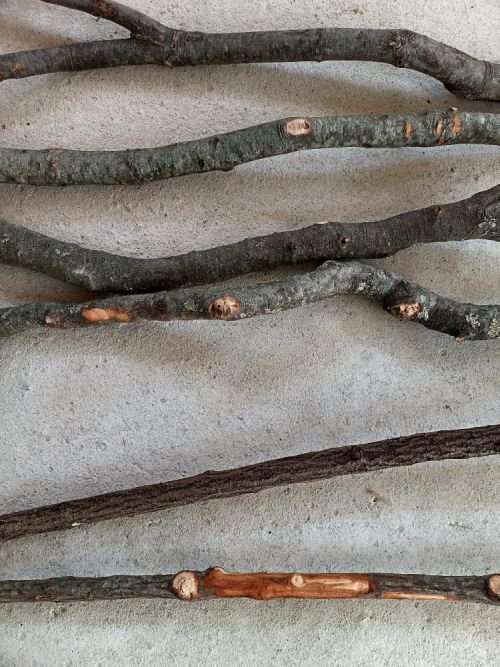
As I progressed with gathering materials, I thought it would be a great addition to use dice towers to prevent dice from falling onto the cardboard game board. Initially, I considered one dice tower to be sufficient, but eventually, I realized I needed to purchase another one. One will be placed on the right and the other on the left side of the board. Below, you can see the first dice tower that will be used. I have photos showing how it looked when I bought it and how it appears after I painted it. The difference in aesthetic appeal is significant, and I'm quite pleased with the result, especially since it was my first attempt at painting a miniature (I did watch quite a few YouTube videos on how to do the entire process).
Regarding the cost of the miniature, I should mention that I bought it for 30 euros unpainted, because the painted version was unattractive and cost 75 euros. The outcome is that I painted it the way I wanted and envisioned, and I saved 45 euros in the process.
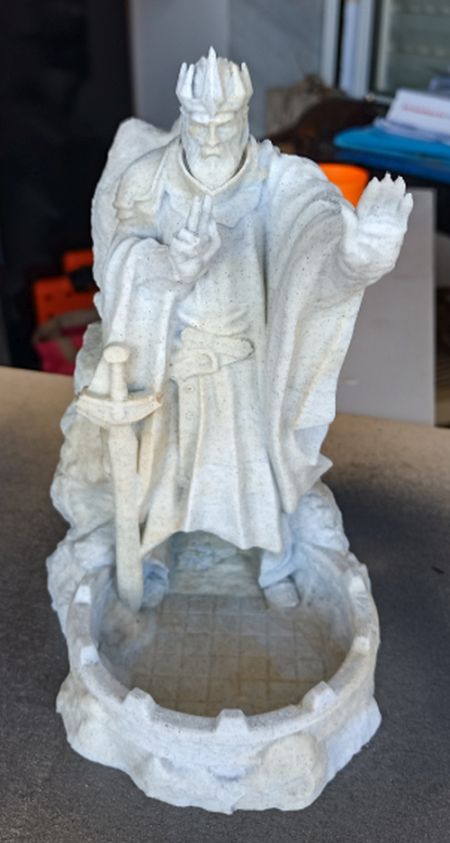
before painting the dice tower
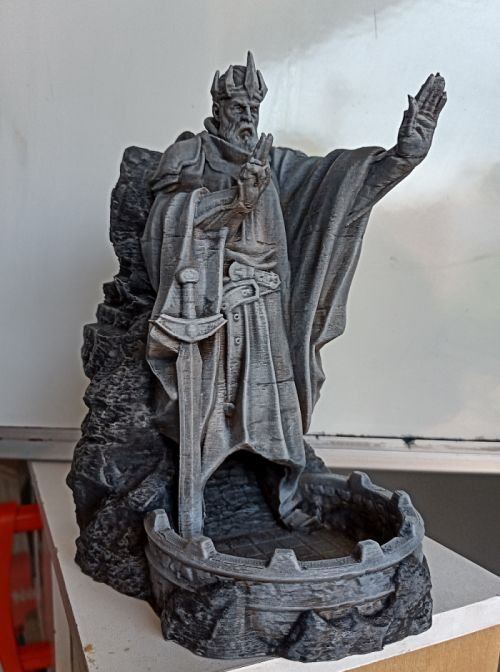
final outcome after painting the dice tower
More posts about the progress of this project are coming. If you want to check out previous posts, you can visit the following links
1 - https://hive.blog/spt/@funnel/an-amazing-adventure-aaa
Total Amount Spend so far : 165 euros
you may let me advertise my passion game Splinterlands of course ,which gave me the initiative to start customizing Monopoly Lord Of The Rings
Get on board by clicking this link it is never too late to start playing
